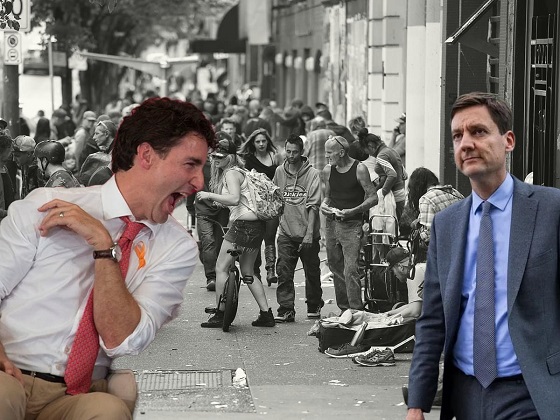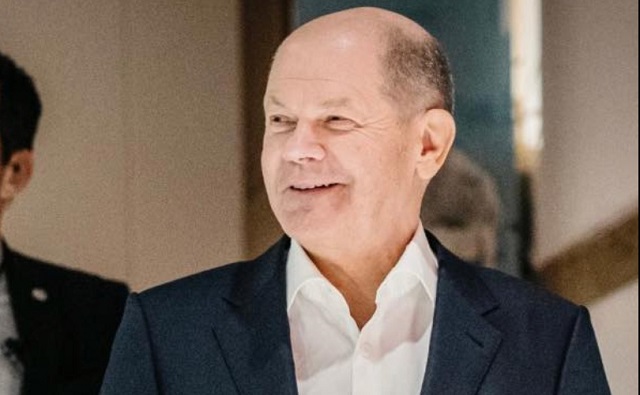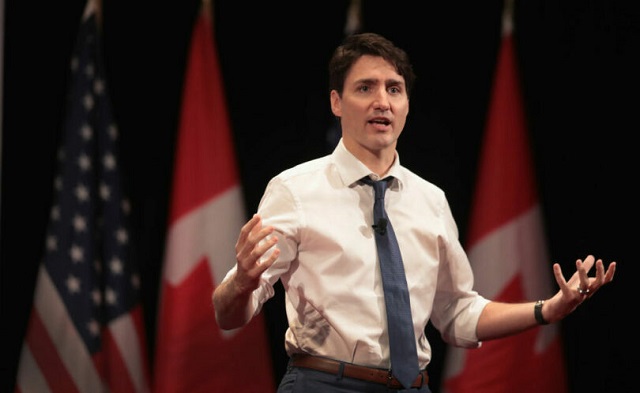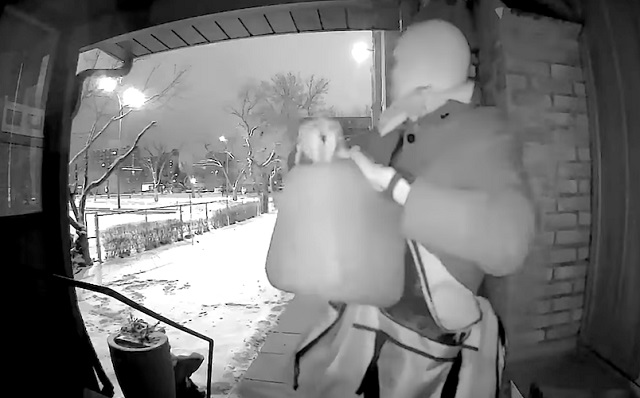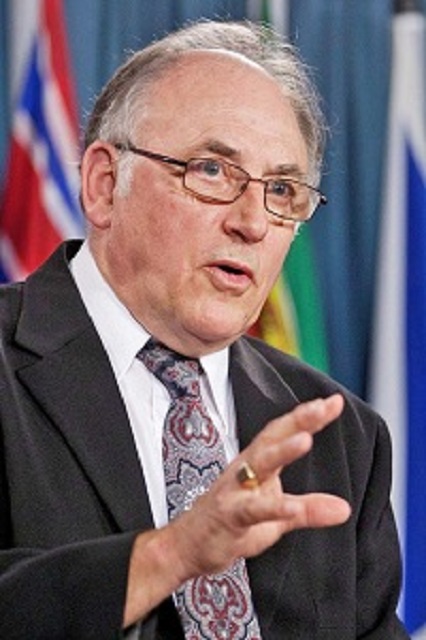Brownstone Institute
Lockdowns: The Great Gaslighting
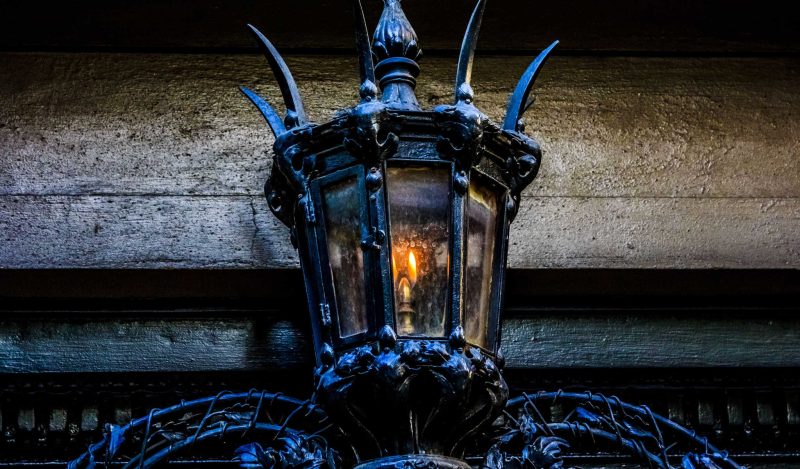
From the Brownstone Institute
BY
More than two years since the lockdowns of 2020, the political mainstream, particularly on the left, is just beginning to realize that the response to Covid was an unprecedented catastrophe.
But that realization hasn’t taken the form of a mea culpa. Far from it. On the contrary, in order to see that reality is starting to dawn on the mainstream left, one must read between the lines of how their narrative on the response to Covid has evolved over the past two years.
The narrative now goes something like this: Lockdowns never really happened, because governments never actually locked people in their homes; but if there were lockdowns, then they saved millions of lives and would have saved even more if only they’d been stricter; but if there were any collateral damage, then that damage was an inevitable consequence of the fear from the virus independent of the lockdowns; and even when things were shut down, the rules weren’t very strict; but even when the rules were strict, we didn’t really support them.
Put simply, the prevailing narrative of the mainstream left is that any upside from the response to Covid is attributable to the state-ordered closures and mandates that they supported, while any downside was an inevitable consequence of the virus independent of any state-ordered closures and mandates which never happened and which anyway they never supported. Got it? Good.

This perplexing narrative was perfectly encapsulated in a recent viral tweet by a history professor who griped about the difficulty of convincing his students that government mandates had nothing to do with the fact that they couldn’t leave their homes in 2020.

Similarly, in an interview with Bill Maher, celebrity scientist Neil DeGrasse Tyson argued that we can’t assess the effects of lockdowns and mandates because the counterexamples, like Sweden, are too different to be applicable. (Starting at 2:15).
Likewise, astonishingly, in a debate on Monday, Charlie Crist, Democratic candidate for governor of Florida, accused Ron DeSantis of being “the only governor in the history of Florida that’s ever shut down our schools.” “You’re the only governor in the history of Florida that shut down our businesses,” Crist went on, “I never did that as governor. You’re the one who’s the shutdown guy.”
In fact, as DeSantis pointed out, Crist had publicly sued DeSantis to keep kids out of school in 2020, and he wrote DeSantis a letter in July 2020 saying the entire state should still be in lockdown.
Arguments like these are as facile as they are transparent. Does anyone honestly think these people would be arguing that lockdowns didn’t happen, or that it’s impossible to measure their effects, if the policy had been a success?
As is extraordinarily well-documented by data, video evidence, news reports, government orders, testimonial evidence, and living memory, the strict lockdowns of spring 2020 were all too real. And few people publicly opposed them.
As former UN Assistant Secretary-General Ramesh Thakur has documented in meticulous detail, the harms that lockdowns would cause were all well-known and reported when they were first adopted as policy in early 2020. These included accurate estimates of deaths due to delayed medical operations, a mental health crisis, drug overdoses, an economic recession, global poverty and hunger. In March 2020, the Dutch government commissioned a cost-benefit analysis concluding that the health damage from lockdowns—let alone the economic damage—would be six times greater than the benefit.
Yet regardless, for reasons we’re still only beginning to understand, key officials, media entities, billionaires and international organizations advocated the broad imposition of these unprecedented, devastating policies from the earliest possible date. The resulting scenes were horrific and dystopian.
People lined up outdoors in freezing temperatures to get food.
In many cities, still-sick patients were tossed out of hospital beds and sent back to nursing homes.

Playgrounds were taped up.

Parks and beaches were closed, and some mainstream commentators argued that those closures should be even stricter.



Many who flouted these closures were charged or arrested.


Stores, and sometimes sections of stores, that were deemed “non-essential” were cordoned off.

School closures caused an unprecedented learning setback, especially for the poorest students. But even when schools were open, kids had to sit for hours in masks, separated by plexiglass barriers.

Many kids were forced to eat lunch outside in silence.

Countless small businesses were forced to close, and more than half of those closures became permanent.

Cars lined up for miles to at food banks.
The Financial Times reported that three million in the United Kingdom went hungry due to lockdown.

The situation was far worse in the developing world.
If these horror stories aren’t enough, the raw data speaks for itself.

The mainstream left’s newfound reluctance to refer to these policies as “lockdown” is especially curious, because they showed no such reluctance at the time they were actually implementing lockdowns in 2020.

By pretending that all of these horrors were attributable to public panic, apologists for the response to Covid are attempting to shift blame away from the political machines that imposed lockdowns and mandates onto individuals and their families. This is, of course, despicable and bunk. People did not voluntarily go hungry, or stand in the freezing cold to get food, or remove themselves from hospitals while they were still sick, or bankrupt their own businesses, or force their own kids to sit outside in the cold, or march hundreds of miles in exodus after losing their jobs in factories.
The collective denial of these horrors, and the refusal of media, financial, and political elites to report on them, amounts to nothing less than the greatest act of gaslighting that we’ve seen in modern times.
Further, the argument that all of these terrible outcomes could be attributed to public panic rather than state-imposed mandates would be far more convincing if governments hadn’t taken unprecedented actions to deliberately panic the public.
A report later revealed that military leaders had seen Covid as a unique opportunity to test propaganda techniques on the public, “shaping” and “exploiting” information to bolster support for government mandates. Dissenting scientists were silenced. Government psyops teams deployed fear campaigns on their own people in a scorched-earth campaign to drive consent for lockdowns.
Moreover, as a study by Cardiff University demonstrated, the primary factor by which citizens judged the threat of COVID-19 was their own government’s decision to employ lockdown measures. “We found that people judge the severity of the COVID-19 threat based on the fact the government imposed a lockdown—in other words, they thought, ‘it must be bad if government’s taking such drastic measures.’ We also found that the more they judged the risk in this way, the more they supported lockdown.” The policies thus created a feedback loop in which the lockdowns and mandates themselves sowed the fear that made citizens believe their risk of dying from COVID-19 was hundreds of times greater than it really was, in turn causing them to support more lockdowns and mandates.
Those who publicly spoke against lockdowns and mandates were ostracized and vilified—denounced by mainstream outlets like the New York Times, CNN, and health officials as “neo-Nazis” and “white nationalists.” Further, among those who really believed the mainstream Covid narrative—or merely pretended to—all the authoritarian methods that had supposedly contributed to China’s “success” against Covid, including censoring, canceling, and firing of those who disagreed, were on the table.
Though many now claim to have opposed these measures, the truth is that publicly opposing lockdowns when they were at their apex in spring 2020 was lonely, frightening, thankless, and hard. Few did.
The gaslighting is by no means limited to the political left. On the political right, which now generally acknowledges that Covid mandates were a mistake, the revisionism is subtler, and tends to take the form of elites casting themselves—falsely—as having been anti-lockdown voices in early 2020, when the record is quite clear that they were vocal advocates of lockdowns and mandates.
Fox News host Tucker Carlson now rightly acts as a champion of the anti-mandate cause, but in fact Carlson was one of the most influential individuals who talked Donald Trump into signing onto lockdowns in early 2020. The UK’s short-lived Prime Minister Liz Truss stated that she’d “always” been against lockdowns, but she publicly supported both lockdowns and vaccine passes. Likewise, Canada’s conservative leader Pierre Poilievre now casts himself as an anti-mandate leader, but he supported both lockdowns and vaccine mandates as they were happening.
As Ben Irvine, author of The Truth About the Wuhan Lockdown, has tirelessly documented, right-wing publications including the UK’s Daily Telegraph now routinely act as opponents of lockdowns and mandates, while staying silent as to their own vocal support for strict lockdowns in spring 2020. And the same goes for countless other commentators and influencers on the political right as well.
To those who know their history, this wholesale gaslighting by elites on both the left and the right, while galling, isn’t terribly surprising. Most elites obtain power by doing whatever is in their own perceived best interest at any given time. They didn’t support lockdowns for any moral or even utilitarian reason. Rather, in spring 2020, elites calculated supporting lockdowns to be in their own best interest. Two years later, many now calculate it to be in their best interest to pretend they were the ones who always opposed lockdowns—while sidelining those who actually did.
This revisionism is all the more disappointing because a small handful of politicians including Ron DeSantis, Imran Khan, and Alberta Premier Danielle Smith have proven that admitting error in implementing lockdowns and mandates isn’t that hard, and can even be politically profitable.
The same should go for the political left. Thus far, we have yet to see anything remotely resembling regret from any leader on the left, but this is what a decent, Truman-era Democrat might say in these circumstances:
“The lockdowns of 2020 were a terrible mistake. While they were outside my field, it was my duty to properly vet the credibility of the advice that was coming from health officials and to end the mandates as soon as it was clear they weren’t working. In that role, I failed, and you all have my humblest apologies. Given the unprecedented harm that’s been done by these mandates, I support a full investigation into how this advice came about, in part to ensure there hasn’t been any untoward communist influence on these policies.”
Those who spoke against lockdowns and mandates in early 2020 showed that they were willing to stand up for the freedoms and Enlightenment principles for which our forebears fought so tirelessly, even when doing so was lonely, thankless, and hard. For that reason, anyone who did so has reason to feel extremely proud, and the future would be brighter if they were in positions of leadership. That fact is now becoming increasingly clear—unfortunately, even to those who did the opposite. One more reason to keep all the receipts.
Republished from the author’s Substack
Brownstone Institute
A Coup Without Firing a Shot

From the Brownstone Institute
BY
We all have a different starting place and journey but each of us has the following in common. We’ve realized that official sources, the ones we’ve trusted in the past, are not going to make any sense of the above for us. We have to seek out alternatives and put the story together ourselves. And this we must do because the only other choice is to accept that all of the above consists of a random series of disconnected and pointless events, which is surely not true.
The last few years can be tracked at two levels: the physical reality around us and the realm of the intellectual, mental, and psychological.
The first level has presented a chaotic narrative of the previously unthinkable. A killer virus that turned out to be what many people said it was in February 2020: a bad flu with a known demographic risk best treated with known therapeutics. But that template and the ensuing campaign of fear and emergency rule gave rise to astonishing changes in our lives.
Social functioning was wholly upended as schools, businesses, churches, and travel were ended by force. The entire population of the world was told to mask up, despite vast evidence that doing so achieved nothing in terms of stopping a respiratory virus.
That was followed by a breathtaking propaganda campaign for a shot that failed to live up to its promise. The cure for the disease itself caused tremendous damage to health including death, a subject about which everyone cared intensely before the shot and then strangely forgot about after.
Protests against the goings-on were met with media smears, shutdowns, and even the cancellation of bank accounts. However, and simultaneously, other forms of protest were encouraged, insofar as they were motivated by a more proper political agenda against structural injustices in the old system of law and order. That was a strange confluence of events, to say the least.
In the midst of this, which was wild enough, came new forms of surveillance, censorship, corporate consolidation, an explosion of government spending and power, rampant and global inflation, and hot wars from long-running border conflicts in two crucial regions.
The old Declarations of rules on the Internet put free speech as a first principle. Today, the hosting website of the most famous one, signed by Amnesty International and the ACLU, is gone, almost as if it never existed. In 2022, it came to be replaced by a White House Declaration on the Future of the Internet, that extols stakeholder control as the central principle.
All the while, once-trusted sources of information – media, academia, think tanks – have steadfastly refused to report and respond in truthful ways, leading to a further loss of public trust not just in government and politics but also in everything else, including corporate tech and all the higher order sectors of the culture.
Also part of this has been a political crisis in many nations, including the use of sketchy election strategies justified by epidemiologic emergency: the only safe way to vote (said the CDC) is absentee via the mails. Here we find one of many overlapping parallels to a scenario hardly ever imagined: infectious disease deployed as a cover for political manipulation.
Crucially and ominously, all of these mind-blowing developments took place in roughly similar ways the world over, and with the same language and model. Everywhere people were told “We are all in this together,” and that social distancing, masking, and vaxxing was the correct way out. Media was also censored everywhere, while anti-lockdown protestors (or even those who simply wanted to worship together in peace) were treated not as dissidents to be tolerated but irresponsible spreaders of disease.
Can we really pretend that all of this is normal, much less justified? The exhortation we receive daily is that we can and must.
Really? At what point did you realize that you had to start thinking for yourself?
We all have a different starting place and journey but each of us has the following in common. We’ve realized that official sources, the ones we’ve trusted in the past, are not going to make any sense of the above for us. We have to seek out alternatives and put the story together ourselves. And this we must do because the only other choice is to accept that all of the above consists of a random series of disconnected and pointless events, which is surely not true.
That leads to the second layer of comprehension; the intellectual, mental, and psychological. Here is where we find the real drama and incalculable difficulties.
At the dawn of lockdowns, what appeared to be a primitive public health error seemed to be taking place. It seemed like some scientists at the top, who gained an implausible amount of influence over government policy, had forgotten about natural immunity and were under the impression that it was good for health to stay home, be personally isolated, avoid exercise, and eat only takeout food. Surely such preposterous advice would be revealed soon as the nonsense it was.
How in the world could they be so stupid? How did they gain so much influence, not just nationally but all over the world? Did the whole of humanity suddenly forget about all known science in every field from virology to economics to psychology?
As time went on, more and more anomalies appeared that made that judgment seem naïve. As it turns out, what was actually taking place had something to do with a move on the part of security and intelligence services. It was they who were given rule-making authority on March 13, 2020, and that’s why so much of what we needed to know was and is considered classified.
There were early initial reports that the virus itself might have been leaked from a US-backed lab in Wuhan, which introduces the entire subject of the US bioweapons program. This is a very deep rabbit hole itself, thoroughly exposed in Robert F. Kennedy, Jr.’s The Wuhan Cover-Up. There was a reason that topic was censored: it was all true. And as it turns out, the vaccine itself was able to bypass the normal approval process by slipping through under the cover of emergency. In effect, it came pre-approved by the military.
As the evidence continues to roll in, more and more rabbit holes appear, thousands of them. Each has a name: Pharma, CCP, WHO, Big Tech, Big Media, CBDCs, WEF, Deep State, Great Reset, Censorship, FTX, CISA, EVs, Climate Change, DEI, BlackRock, and many more besides. Each of these subject areas has threads or thousands of them, each connecting to more and to each other. At this point, it is simply not possible for a single person to follow it all.
To those of us who have been steeped in following the revelations day by day, and trying to keep up with putting them together into a coherent model of what happened to us, and what is still going on, the ominous reality is that the traditional understanding of rights, liberties, law, business, media, and science were dramatically overthrown in the course of just a few months and years.
Nothing operates today as it did in 2019. It’s not just that functioning broke. It was broken and then replaced. And the surreptitious coup d’état with no shots fired is still ongoing, even if that is not the headline.
Of this fact, many of us today are certain. But how common is this knowledge? Is it a vague intuition held by many members of the public or is it known in more detail? There are no reliable polls. We are left to guess. If any of us in 2019 believed we had our finger on the pulse of the national mood or public opinion generally, we certainly do not anymore.
Nor do we have access to the inner workings of government at the highest levels, much less the conversations going on among the winners of our age, the well-connected ruling elites who seemed to have gamed the entire system for their own benefit.
It’s so much easier to regard the whole thing as a giant confusion or accident on grounds that only cranks and crazies believe in conspiracy theories. The trouble with that outlook is that it posits something even more implausible; that something this gigantic, far-reaching, and dramatic could have happened with no real intentionality or purpose or that it all fell together as a huge accident.
Brownstone Institute has published more than 2,000 articles and 10 books exploring all over the above topics. Other venues and friends are out there helping us with this research and discovery, issue by issue. Even so, a great deal of responsibility falls on this one institution, the main work of which is providing support for dissident and displaced voices, which is implausible since it was only founded three years ago. We are deeply grateful for our supporters and would welcome you to join them.
As for the intellectuals we once revered for their curiosity and wisdom, most seem to have gone into hiding, either unable to adapt to the new realities or just unwilling to risk their careers by exploring hard topics. It’s understandable but still tragic. Most are happy to pretend like nothing happened or celebrate the change as nothing but progress. As for journalists, the New York Times publishes daily commentaries dismissing the Constitution as a dated anachronism that has to go and no one thinks much about it.
There is a lot to sort out. So much has changed so quickly. No sooner than the dust seems to be settling from one upheaval, there is another and then another. Keeping up with it all causes a level of psychological brain scramble on a scale we’ve never previously experienced.
It’s easier to wait for the historians to tell the next generation what happened. But maybe, just maybe, by stepping up and telling the story as we see it in real time, we can make a difference in stopping this madness and restoring some sane and normal freedom back to the world.
Brownstone Institute
Is the Overton Window Real, Imagined, or Constructed?
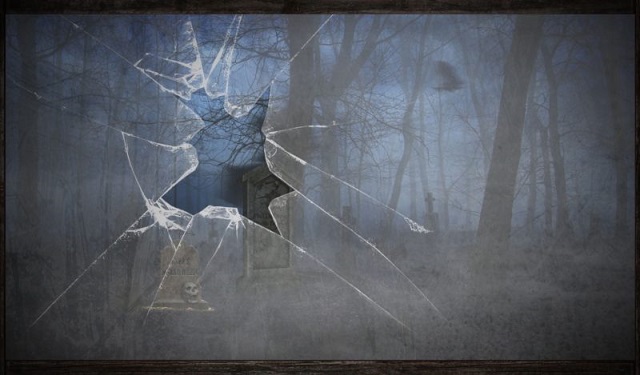
From the Brownstone Institute
BY
Ideas move from Unthinkable to Radical to Acceptable to Sensible to Popular to become Policy.
The concept of the Overton window caught on in professional culture, particularly those seeking to nudge public opinion, because it taps into a certain sense that we all know is there. There are things you can say and things you cannot say, not because there are speech controls (though there are) but because holding certain views makes you anathema and dismissable. This leads to less influence and effectiveness.
The Overton window is a way of mapping sayable opinions. The goal of advocacy is to stay within the window while moving it just ever so much. For example, if you are writing about monetary policy, you should say that the Fed should not immediately reduce rates for fear of igniting inflation. You can really think that the Fed should be abolished but saying that is inconsistent with the demands of polite society.
That’s only one example of a million.
To notice and comply with the Overton window is not the same as merely favoring incremental change over dramatic reform. There is not and should never be an issue with marginal change. That’s not what is at stake.
To be aware of the Overton window, and fit within it, means to curate your own advocacy. You should do so in a way that is designed to comply with a structure of opinion that is pre-existing as a kind of template we are all given. It means to craft a strategy specifically designed to game the system, which is said to operate according to acceptable and unacceptable opinionizing.
In every area of social, economic, and political life, we find a form of compliance with strategic considerations seemingly dictated by this Window. There is no sense in spouting off opinions that offend or trigger people because they will just dismiss you as not credible. But if you keep your eye on the Window – as if you can know it, see it, manage it – you might succeed in expanding it a bit here and there and thereby achieve your goals eventually.
The mission here is always to let considerations of strategy run alongside – perhaps even ultimately prevail in the short run – over issues of principle and truth, all in the interest of being not merely right but also effective. Everyone in the business of affecting public opinion does this, all in compliance with the perception of the existence of this Window.
Tellingly, the whole idea grows out of think tank culture, which puts a premium on effectiveness and metrics as a means of institutional funding. The concept was named for Joseph Overton, who worked at the Mackinac Center for Public Policy in Michigan. He found that it was useless in his work to advocate for positions that he could not recruit politicians to say from the legislative floor or on the campaign trail. By crafting policy ideas that fit within the prevailing media and political culture, however, he saw some successes about which he and his team could brag to the donor base.
This experience led him to a more general theory that was later codified by his colleague Joseph Lehman, and then elaborated upon by Joshua Treviño, who postulated degrees of acceptability. Ideas move from Unthinkable to Radical to Acceptable to Sensible to Popular to become Policy. A wise intellectual shepherd will manage this transition carefully from one stage to the next until victory and then take on a new issue.
The core intuition here is rather obvious. It probably achieves little in life to go around screaming some radical slogan about what all politicians should do if there is no practical means to achieve it and zero chance of it happening. But writing well-thought-out position papers with citations backed by large books by Ivy League authors and pushing for changes on the margin that keep politicians out of trouble with the media might move the Window slightly and eventually enough to make a difference.
Beyond that example, which surely does tap into some evidence in this or that case, how true is this analysis?
First, the theory of the Overton window presumes a smooth connection between public opinion and political outcomes. During most of my life, that seemed to be the case or, at least, we imagined it to be the case. Today this is gravely in question. Politicians do things daily and hourly that are opposed by their constituents – fund foreign aid and wars for example – but they do it anyway due to well-organized pressure groups that operate outside public awareness. That’s true many times over with the administrative and deep layers of the state.
In most countries, states and elites that run them operate without the consent of the governed. No one likes the surveillance and censorial state but they are growing regardless, and nothing about shifts in public opinion seem to make any difference. It’s surely true that there comes a point when state managers pull back on their schemes for fear of public backlash but when that happens or where, or when and how, wholly depends on the circumstances of time and place.
Second, the Overton window presumes there is something organic about the way the Window is shaped and moves. That is probably not entirely true either. Revelations of our own time show just how involved are major state actors in media and tech, even to the point of dictating the structure and parameters of opinions held in the public, all in the interest of controlling the culture of belief in the population.
I had read Manufacturing Consent (Noam Chomsky and Edward Herman; full text here) when it came out in 1988 and found it compelling. It was entirely believable that deep ruling class interests were more involved than we know about what we are supposed to think about foreign-policy matters and national emergencies, and, further, entirely plausible that major media outlets would reflect these views as a matter of seeking to fit in and ride the wave of change.
What I had not understood was just how far-reaching this effort to manufacture consent is in real life. What illustrates this perfectly has been media and censorship over the pandemic years in which nearly all official channels of opinion have very strictly reflected and enforced the cranky views of a tiny elite. Honestly, how many actual people in the US were behind the lockdowns policy in terms of theory and action? Probably fewer than 1,000. Probably closer to 100.
But thanks to the work of the Censorship Industrial Complex, an industry built of dozens of agencies and thousands of third-party cutouts including universities, we were led to believe that lockdowns and closures were just the way things are done. Vast amounts of the propaganda we endured was top down and wholly manufactured.
Third, the lockdown experience demonstrates that there is nothing necessarily slow and evolutionary about the movement of the Window. In February 2020, mainstream public health was warning against travel restrictions, quarantines, business closures, and the stigmatization of the sick. A mere 30 days later, all these policies became acceptable and even mandatory belief. Not even Orwell imagined such a dramatic and sudden shift was possible!
The Window didn’t just move. It dramatically shifted from one side of the room to the other, with all the top players against saying the right thing at the right time, and then finding themselves in the awkward position of having to publicly contradict what they had said only weeks earlier. The excuse was that “the science changed” but that is completely untrue and an obvious cover for what was really just a craven attempt to chase what the powerful were saying and doing.
It was the same with the vaccine, which major media voices opposed so long as Trump was president and then favored once the election was declared for Biden. Are we really supposed to believe that this massive switch came about because of some mystical window shift or does the change have a more direct explanation?
Fourth, the entire model is wildly presumptuous. It is built by intuition, not data, of course. And it presumes that we can know the parameters of its existence and manage how it is gradually manipulated over time. None of this is true. In the end, an agenda based on acting on this supposed Window involves deferring to the intuitions of some manager who decides that this or that statement or agenda is “good optics” or “bad optics,” to deploy the fashionable language of our time.
The right response to all such claims is: you don’t know that. You are only pretending to know but you don’t actually know. What your seemingly perfect discernment of strategy is really about concerns your own personal taste for the fight, for controversy, for argument, and your willingness to stand up publicly for a principle you believe will very likely run counter to elite priorities. That’s perfectly fine, but don’t mask your taste for public engagement in the garb of fake management theory.
It’s precisely for this reason that so many intellectuals and institutions stayed completely silent during lockdowns when everyone was being treated so brutally by public health. Many people knew the truth – that everyone would get this bug, most would shake it off just fine, and then it would become endemic – but were simply afraid to say it. Cite the Overton window all you want but what is really at issue is one’s willingness to exercise moral courage.
The relationship between public opinion, cultural feeling, and state policy has always been complex, opaque, and beyond the capacity of empirical methods to model. It’s for this reason that there is such a vast literature on social change.
We live in times in which most of what we thought we knew about the strategies for social and political change have been blown up. That’s simply because the normal world we knew only five years ago – or thought we knew – no longer exists. Everything is broken, including whatever imaginings we had about the existence of this Overton window.
What to do about it? I would suggest a simple answer. Forget the model, which might be completely misconstrued in any case. Just say what is true, with sincerity, without malice, without convoluted hopes of manipulating others. It’s a time for truth, which earns trust. Only that will blow the window wide open and finally demolish it forever.
-

 Censorship Industrial Complex1 day ago
Censorship Industrial Complex1 day agoNow We Are Supposed to Cheer Government Surveillance?
-

 Alberta1 day ago
Alberta1 day agoRed Deer Doctor critical of Alberta’s COVID response to submit report to Danielle Smith this May
-

 conflict1 day ago
conflict1 day agoCol. Douglas Macgregor torches Trump over support for bill funding wars in Ukraine and Israel
-

 Business7 hours ago
Business7 hours agoTaxpayers criticize Trudeau and Ford for Honda deal
-

 Alberta1 day ago
Alberta1 day agoAlberta’s baby name superstar steals the show again
-

 Business10 hours ago
Business10 hours agoDon’t be fooled by high-speed rail
-

 COVID-192 days ago
COVID-192 days agoInquiry shows Canadian gov’t agencies have spent $10 million on social media ads for COVID jabs
-

 Alberta10 hours ago
Alberta10 hours agoActivity-Based Hospital Funding in Alberta: Insights from Quebec and Australia



